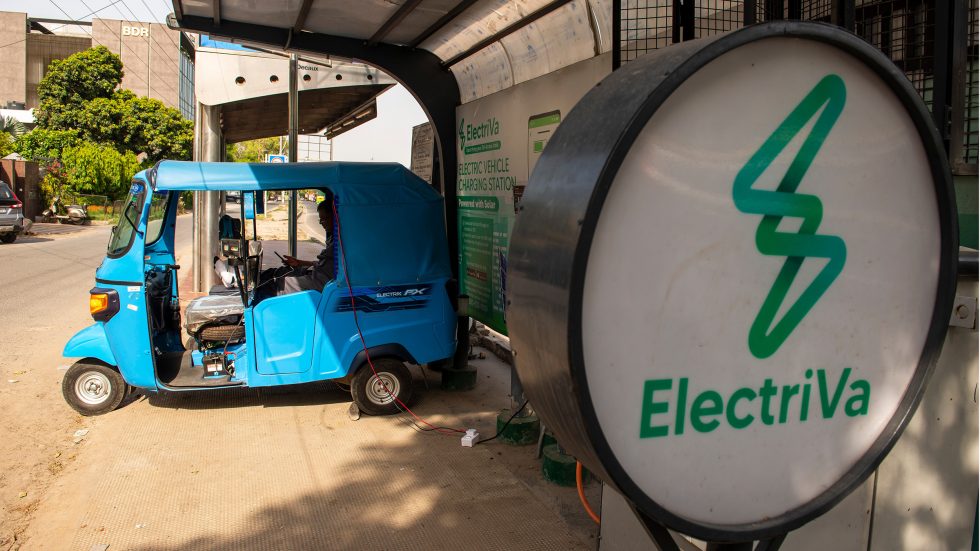
India looks to locally-made batteries for an energy independent future
An Interview with Michael Burz, President and CEO

What took you to India?
We were asked to speak at the International Zinc Association’s fourth global zinc summit on the use of zinc for advanced batteries and decided to take advantage of the fact that we would be in India to meet with additional potential Industry Advisory Group (IAG) members. So, we combined the conference with a trip to talk to some of the largest lead acid battery companies in India and Bangladesh.
What surprised you most about the market and the companies you met there?
First, how large they are. As you know, India has about 1.4 billion people and it’s projected that, by the end of the year, it will have more people than China. Bangladesh itself is approaching two hundred million people. It’s one thing to talk about the aims and growth of a country, but it’s another to be there and see how rapidly they’re moving. To see how committed they are to the electrification of both mobility and stationary and storage was very inspiring. If you look at what they intend to do, they are a model for rapidly growing markets in the 21st century: rapid deployment of electrification for both mobility and stationary energy storage with a focus on safety, high performance, and recyclability.
What did you see in the mobility market there? Many of us have an image of Indian transportation including rickshaws, are you seeing those being electrified? Are you seeing other modes get deployed?
There’s an intent on the part of the Indian Government to electrify as much as possible. At the moment, the three-wheeled market is very large, but most of those come from China and are powered by internal combustion engines. The Indian government’s primary focus is to take the mobility arena—two-wheelers and three-wheelers, and urban four-wheelers or what one of our IAG members calls Last Mile Mobility (LMM)—and electrify all of them.
What about stationary storage? What are some of the differences that you see there versus the U.S. market?
It’s interesting: their version of residential energy storage is not the same as ours. In the United States, we tend to think of residential energy storage on the multi-kilowatt hour scale, say 15 kWh batteries to provide backup power for six to eight hours, overnight. In India and Bangladesh, what they’re interested in is essentially grid stability: batteries that can recharge quickly and be used for when the power drops out, with only two to four hours of discharge time. It is not just the way in which they want to use it, but how affordable it needs to be for people buying small backup battery systems for their apartment or house.

There have been a lot of news stories about fires caused by cheaper lithium-ion batteries, such as a tragic fire that engulfed a hotel above an e-scooter shop in Mumbai. Can you talk about the concerns you’re hearing about lithium in that market?
It’s obvious when you take a look at photographs of large-scale Indian and Bangladeshi cities that they’re very, very dense, so safety is absolutely critical. We heard that a number of times: for this highly dense urban environment, safety is absolutely paramount.
If you combine that, with wariness of the supply chain from China—whether it’s the materials to make lithium batteries or the offer to build the factories for them—the Indians and the Bangladeshis are very, very keen on domestic control. What they recognize is that if China controls, as they do, 60 to 80% of the battery materials, they’ll actually be building batteries domestically that will compete with batteries from their very suppliers: the Chinese manufacturers. They want to decouple that.
What they were looking for is something that they can build domestically under their own control, using their materials. And that offers them both safety and affordability. That’s why they were interested in Enzinc’s nickel zinc technology.
You spoke at the Global Zinc Summit in New Delhi. Do you think the global zinc industry understands the potential of zinc as a battery material?
Frankly, up until we presented at the conference, I don’t think that the potential for zinc to be used as a high-performance battery that is equivalent to Lithium Iron Phosphate (LFP) was even on people’s radar. In fact, Andrew Green, who is the Executive Director of the International Zinc Association shared a chart that was done by Bloomberg, which showed that zinc batteries could require almost one million tons of additional zinc by the year 2030. But all of that assumed that zinc was relegated to small-scale or niche markets around stationary energy storage. The fact that batteries with “Enzinc Inside” can offer an equivalent performance LFP opens up so many more applications that we estimate that it can quadruple that million tons of demand and add somewhere between $20 to $40 billion in additional value to the zinc industry.
Any closing thoughts?
What was encouraging was the national commitment in both India and Bangladesh to move aggressively to bring high-performance batteries that were safe, recyclable, and don’t rely on Chinese products or materials to their respective nations. We hear that they’re interested in additional technologies, but to see how fast they want to move—probably quicker than even the United States—was both encouraging and surprising.
Image: Photo by Akshay Nanavati Waldemar Brandt on Unsplash
